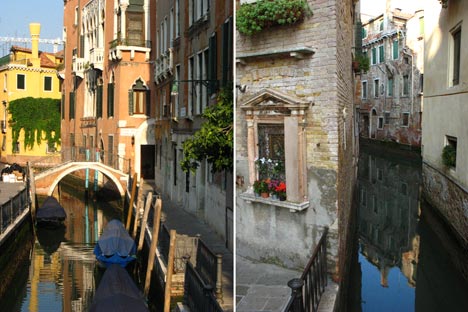Is Sinking, Emptying Venice An Eco-City Exemplar?
2010-01-14 from:treehugger author:Jennifer Hattam

The view across the water from St. Mark's Square. Photo by Jennifer Hattam.
"Venice gives us a hint of the truly possible and inspiring pedestrian environments," Richard Register, the founder of Ecocity Builders, wrote a couple of years back. He sounded the same note at his organization's 8th Ecocity World Summit in Istanbul last month, holding the Italian city up as an example of an ecocity that's here today. But is Venice really worthy of such an accolade?
The car-free nature of the city is, of course, what excites advocates of sustainable urban development. "The first thing one encounters upon approaching Venice is the irrevocable reality of having to give up one's car," Daily Kos blogger citisven, who works with the Ecocity organization, wrote in a recent post. "It's like checking your coat at the door."
A City Built to Human Scale
After nodding to some of the city's well-publicized problems -- including frequent flooding and garbage and sewage issues, he added: "However, with every step I took through the streets and alleys of this pedestrian paradise I was struck by how much of its urban design serves as an example that ecocities aren't some kind of Utopia but have in fact been in existence for centuries."

Venice's quiet back streets. Photos by Jennifer Hattam.
Venice is undeniably a lovely city, and much of its beauty surely comes from its human scale, as well as the aesthetically pleasing architecture and open spaces that citisven mentions. But with its dramatically declining population -- from about 120,000 in 1980 to 60,000 in 2009 -- the historic old city so often touted as "sustainable" seems like anything but. Sky-high prices, throngs of tourists, and infrastructure problems have all led to to the exodus of actual Venetians, a process referred to by some as "terminal gentrification."
A Little Too Quiet?
Wandering the city's alleys and back streets two summers ago, I was struck by how absolutely uninhabited Venice seemed once you got away from the tourist hot-spots. The peace and quiet was a welcome relief, of course, but the feeling that I was looking at the back of a movie set was disconcerting, especially compared to the lively streets of Istanbul. Where were the street vendors and delivery men, the children playing and the locals running errands? Where were the cool little restaurants, shops, and cafes that hide in most cities' tucked-away corners? Where was the life that pedestrian streets are supposed to foster?
Yes, it was August, and many residents had surely fled the summer hordes. (I would have done the same.) But it got me wondering how hard it might be to live modern life without access to motorized vehicles -- if businesses could sustain themselves making deliveries by handcart, how tough it would be to haul all your groceries home without benefit of even a bus, and where the grocery stores and other amenities of dense urban life were anyway. No matter how few transportation-derived emissions it produces, a city can hardly be sustainable if it doesn't allow -- or better yet, encourage -- people to make a life and a living there.
I'm no expert on Venice, though -- does it seem sustainable to you?

